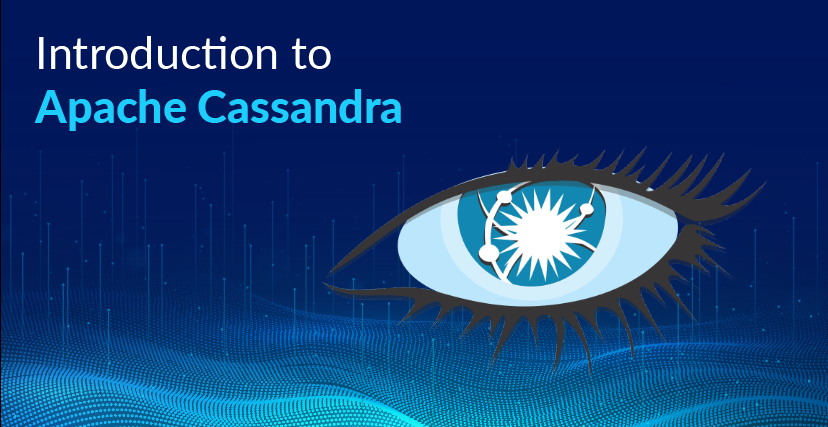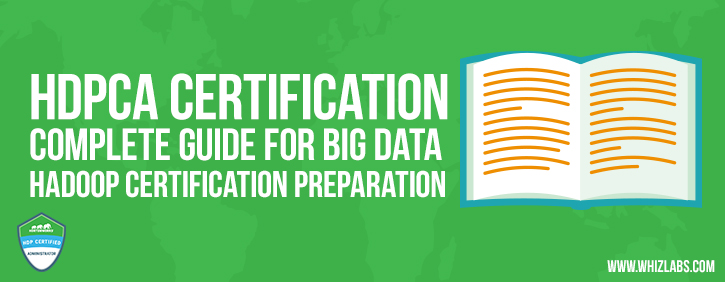Almost every enterprise in the world depends on data for boosting business growth. Data is the lifeblood of business in the digital era, where organizations get the chance to harness massive volumes of consumer data. However, organizations also face the need for ideal infrastructure for the storage, analysis, and processing of large volumes of data. Apache Cassandra has been one of the prominent names in the field of big data analytics for quite some time.
The following Cassandra tutorial would include details about the definition of Apache Cassandra. In addition, you can also find the outline of features and the working of Apache Cassandra. Most important of all, the following discussion would also reflect on the uses of Cassandra. Readers can use the following discussion as a guide on the fundamentals of Apache Cassandra.
Enroll Now: Mastering Apache Cassandra Training Course
What is Apache Cassandra?
One of the foremost factors in any Apache Cassandra tutorial would refer to the definition of Apache Cassandra. However, it is equally important to know about the prerequisites to start learning about Cassandra. The good news is that candidates can easily start learning from a Cassandra tutorial with fundamental expertise in Java programming.
In addition, a bit of familiarity with database concepts and Linux can be preferable for learning about Apache Cassandra. Now, coming to the definition of Apache Cassandra, it is a distributed database system crafted for delivering high scalability and high performance. Apache Cassandra’s design enables it to deliver competent functionalities for the management of considerable volumes of data throughout different commodity servers, thereby ensuring better availability without a single point of failure.
Now, it is evident for readers to wonder, ‘why Cassandra?’ when there are so many data storage options out there. In order to find the answer to this question, it is important to know that Apache Cassandra is a NoSQL database. A reflection on what is NoSQL database and its comparison with a relational database could showcase the importance of Apache Cassandra.
Why are NoSQL Databases Important?
NoSQL database does not imply the contrary to the common SQL database. It is just that Not Only SQL capabilities are evident in NoSQL. The understanding of the NoSQL database is crucial to every Cassandra tutorial. Basically, it is a database that can provide other mechanisms for data storage and retrieval, in comparison to the tabular relations that are evidently implemented in the case of relational databases.
The NoSQL databases can provide schema-free functionality, simple APIs, capabilities for management of massive volumes of data, support for easy replication, and consistency. NoSQL database primarily emphasizes on achieving simplicity in design, better control over the availability, and horizontal scaling.
The difference between NoSQL databases and relational databases also depends on the type of data structures they use. As a result, the NoSQL database can provide better speed in the case of certain operations. The applications of a specific NoSQL database are determined according to the specific use case.
Another important aspect of understanding the characteristics of Cassandra is the comparison of NoSQL databases with relational databases. It is also important for learners to know about the drawbacks associated with NoSQL databases. Relational databases support powerful query language while NoSQL database supports simple query language.
Relational databases are capable of ACID compliance to support transactions, which is not exactly the case with NoSQL databases. Other than Apache Cassandra, the two most common types of NoSQL databases include MongoDB and Apache HBase.
Unique Traits of Apache Cassandra
So, what makes Apache Cassandra unique? It is an open-source, decentralized, and distributed storage system, and that is the basics of it. On the other hand, learners should also know about the important traits of Apache Cassandra in this Cassandra tutorial. The foremost pointer about Apache Cassandra is that it provides higher consistency, scalability, and fault tolerance.
The second aspect of Cassandra is the fact that it serves as a key-value and also a column-oriented database. The distributed design of Apache Cassandra follows that of Amazon’s DynamoDB and mirrors Google’s Bigtable, in terms of distribution design. The stark difference of NoSQL databases from relational databases is also a prominent factor for determining the uniqueness of Apache Cassandra.
Another potential highlight of Apache Cassandra is evident in the form of a Dynamo-style replication model without a single point of failure. On the contrary, users can avail a high-performance ‘column family’ data model. The most striking highlight of Apache Cassandra is the client base. You can find many big names such as Netflix, Cisco, Facebook, Twitter, and more in the user base of Apache Cassandra.
Origins of Apache Cassandra
With the ideal traits to stand out in the market, it becomes intriguing to find out the origins of Apache Cassandra in a Cassandra tutorial. The idea of Cassandra originally emerged for addressing the inbox search problem on Facebook. In 2008, the author of Amazon Dynamo, Avinash Lakshman, and Prashant Malik developed Cassandra at Facebook, and it has come a long way since then.
The Cassandra architecture started off on the basis of the concept of column families and super column families. Presently, it is capable of serving the functionalities of a key-value store. Users can still find messages about column families on Cassandra. Apache Cassandra’s latest version, 2.0, was released in 2014 when it became an open-source project of Apache.
Architecture of Apache Cassandra
The next important pointer in any Apache Cassandra tutorial would obviously point towards the working of Cassandra. The easiest way to understand its working is to find the details about Cassandra architecture carefully. The architecture of Apache Cassandra is fit for managing big data workloads on multiple nodes without a single point of failure.
The peer-to-peer gossip communication protocol in Cassandra across the nodes ensures feasible, effective, and appropriate distribution of data across different nodes in a specific cluster. It is clearly evident that different nodes in the cluster serve the same functionality while maintaining independency despite interconnection to the remaining nodes.
The next important aspect in the working of Cassandra you should note in a Cassandra tutorial is that every node has the capacity to read and write requests, irrespective of the data’s location in the cluster. Therefore, in event of failure of a node, other nodes in the network could help in serving read or write requests.
The aspect of data replication in Cassandra can also deliver a detailed and clear answer to ‘why Cassandra.’ Data replication is one of the basic tenets of the functioning of Apache Cassandra. It ensures that one or multiple nodes in a specific cluster can serve as replicas for a specific piece of data.
In the event of detection of responses by some nodes with outdated values, Cassandra would deliver the latest result to the client. After delivering the recent value, Apache Cassandra deploys a read repair in the background for updating stale values. Let us reflect on the different significant components in Cassandra to strengthen this Cassandra tutorial.
- The first element in the architecture of Cassandra is the node that is used for data storage.
- The second element in Cassandra is the data center, which is basically the set of related nodes.
- The cluster is also an important component in the Cassandra tutorial as it provides the basic explanation for the working of Cassandra.
- The commit log is another formidable component in Cassandra, which serves the role of a crash-recovery mechanism. Cassandra ensures the writing of every writes operation to the commit log.
- The Mem-table is also a unique component in the architecture of Cassandra. It serves as a memory-resident data structure, and data has to be written to mem-table after the commit log. Users can also find multiple mem-tables in the case of a single-column family in certain instances.
- The Bloom filter is also a reliable component worth mentioning in a Cassandra tutorial. They are fast, non-deterministic testing algorithms for checking the membership of an element. You can think of them as a unique type of cache for Apache Cassandra.
- The final addition among components in the architecture of Cassandra is the SSTable. The SSTable is the disk file on which data from the mem-table is pushed in event of contents in the mem-table reaching a threshold value.
Finally, the most important aspect of the functionality of Apache Cassandra is the Cassandra Query Language or CQL. CQL considers the databases as containers, including tables. The cqlsh: prompt can help users in working with the CQL or other application language drivers. CQL supports in approaching any node for read-write operation with the node serving as a proxy in the communication between the client and the nodes that hold data.
Features of Apache Cassandra
The characteristics of Cassandra are also an important aspect of any introduction to the popular NoSQL database option. The features of Cassandra have been the primary reason for driving its popularity over the years since its inception. Although Cassandra serves promising advantages in the form of its basic traits and architecture, the features provide additional value to clients. Here is an outline of the top features that you can find in a Cassandra tutorial.
- One of the foremost characteristics of Cassandra that favors its adoption is elastic scalability. The higher scalability allows for the accommodation of new hardware, customers, and data according to client requirements.
- The second feature of Cassandra is high availability for business-critical applications without having a single point of failure.
- Cassandra provides exceptionally high performance in linear scaling as it increases performance according to the increment of a number of nodes in the cluster.
- Cassandra also provides reliable support for all the noticeable data formats that include unstructured, structured, and semi-structured data. Cassandra also provides dynamic accommodation for changes in data structures according to user needs.
- The capability of Cassandra to address large volumes of data is a prominent highlight in any Cassandra tutorial. Cassandra achieves this through flexibility for data distribution by enabling data replication throughout various datacenters.
- The most striking highlight feature of Apache Cassandra is the support for running on commodity hardware, thereby reducing cost concerns. Most important of all, Cassandra features support for ACID compliance in transactions and a better speed of writes without compromising the efficiency of reading operations.
Conclusion
On a concluding note, you can clearly observe the potential of Apache Cassandra to simplify big data analytics. It not only provides easier and unrestricted data storage and management but also value for various data-related operations. The use of Cassandra in cases demanding faster storage of massive volumes of information is evident.
At the same time, you can also find many other notable use cases of Apache Cassandra. For example, high-performance read/write operations, high fault-tolerance cluster requirements would be suitable for calling in Apache Cassandra. Therefore, you can capitalize on the features of Apache Cassandra for diverse use cases.
On the other hand, it is also important for beginners to keep the shortcomings of Apache Cassandra in mind. Any Cassandra tutorial without reflection on setbacks would deliver a partial impression of the NoSQL database option. Start exploring more about Apache Cassandra and its functionalities right now with the Mastering Apache Cassandra training course!
- Cloud DNS – A Complete Guide - December 15, 2021
- Google Compute Engine: Features and Advantages - December 14, 2021
- What is Cloud Run? - December 13, 2021
- What is Cloud Load Balancing? A Complete Guide - December 9, 2021
- What is a BigTable? - December 8, 2021
- Docker Image creation – Everything You Should Know! - November 25, 2021
- What is BigQuery? - November 19, 2021
- Docker Architecture in Detail - October 6, 2021

